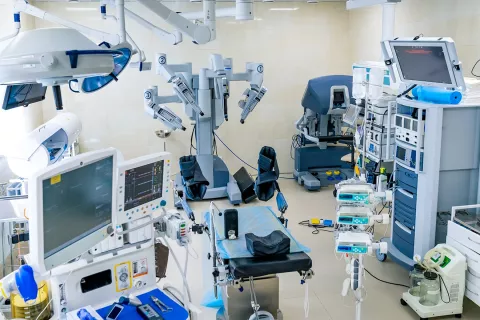
The United States (US) represents one of the largest medical device markets in the world, offering significant opportunities to foreign manufacturers. However, medical device manufacturers seeking to access the US market need to navigate the complex Regulatory landscape of the US Food and Drug Administration (FDA). They must understand and comply with the US FDA’s regulations to successfully launch their products in the US. This blog explores the specific considerations and challenges faced by foreign manufacturers seeking the US FDA’s approval for their medical devices.
Understanding the US FDA’s Regulatory Framework
The US FDA’s Center for Devices and Radiological Health (CDRH) is responsible for regulating firms that manufacture, repackage, relabel, and/or import medical devices sold within the US. The Regulatory framework includes a series of controls that are designed to ensure the safety and efficacy of devices. These include establishment registration, medical device listing, pre-market notification (510[k]), Pre-market Approval (PMA), Quality System Regulation (QSR), and Medical Device Reporting (MDR), all of which are elucidated below:
- Establishment Registration and Device Listing: Foreign manufacturers must register their establishments with the US FDA annually and list the devices they intend to market in the US. This process is a means for the US FDA to keep track of who is manufacturing devices as well as the types of devices being manufactured. Registration and listing are prerequisites for a successful market entry and must be completed before the manufacturer can legally sell their device in the US.
- Pre-market Notification and PMA: Most medical devices require a pre-market notification, known as a 510(k) application, before they can be legally sold in the US. The 510(k) submission process involves demonstrating that the device is substantially equivalent to a legally marketed device that is not subject to PMA. Higher-risk devices may require a more rigorous PMA, which involves providing scientific evidence to ensure the device’s safety and efficacy.
- QSR: The US FDA mandates that all medical devices should be manufactured in accordance with the QSR (21 CFR Part 820), which outlines the necessary steps for manufacturers to develop, conduct, control, and monitor production processes. Compliance with QSR is critical, and foreign manufacturers must ensure that their manufacturing practices meet these standards.
- MDR: Foreign manufacturers whose devices are distributed within the US must comply with MDR regulations, which mandate the reporting of certain adverse events. This includes incidents where a device may have caused or contributed to any death or serious injury as well as certain device malfunctions.
Challenges for Foreign Manufacturers
Some of the key challenges foreign manufacturers of medical devices face when entering the US market include:
- Navigating the Regulatory Landscape: One of the primary challenges for foreign manufacturers is understanding the complex Regulatory requirements of the US FDA. The US FDA provides resources such as the “Device Advice” website and “CDRH Learn” online courses to help manufacturers understand the regulations. However, complying with these nuanced regulations can still be daunting, especially for those unfamiliar with the US FDA’s Regulatory structure.
- Quality System Compliance: Ensuring that manufacturing processes meet the US FDA’s standards can be particularly challenging for foreign manufacturers. They must align their QMS with the US FDA’s requirements, which may differ from those in their home countries. Compliance with 21 CFR Part 820 or ISO 13485 is essential, and manufacturers must have documentation to prove their adherence to these standards.
- Communication and Language Barriers: Effective communication with the US FDA is critical for successful Regulatory compliance. Language barriers and differences in business practices can complicate interactions with the agency. Foreign manufacturers must be prepared to engage with the US FDA in a clear and timely manner, which often requires the assistance of Regulatory professionals or consultants who can communicate clearly and are well-versed in the Regulatory requirements.
- Import and Distribution Considerations: Foreign manufacturers should consider the logistics of importing and distributing their devices in the US. This includes ensuring that devices are designed with power supplies that are compatible with US standards and that any complaints are forwarded to the manufacturer for review and analysis. Contracts with US distributors should clearly outline their responsibilities in the process of achieving compliance with the US FDA’s regulations.
- Legal and Financial Implications: Non-compliance with the US FDA’s regulations can result in significant legal and financial repercussions, including fines, recalls, or bans on selling the device in the US. Foreign manufacturers must be diligent in their efforts to achieve compliance in order to avoid these costly penalties.
While foreign medical device manufacturers may find it challenging to gain the US FDA’s approval, it is an achievable goal. By understanding the specific Regulatory requirements, aligning manufacturing processes with the US FDA’s standards, and effectively communicating with the agency, manufacturers can successfully navigate this intricate Regulatory landscape. Challenges such as language barriers and quality system compliance exist, but thorough preparation and a commitment to meeting the US FDA’s regulations can lead to a successful market entry and an opportunity to place innovative medical devices on the US market. For assistance with your US FDA-related medical device requirements, contact Freyr now!









